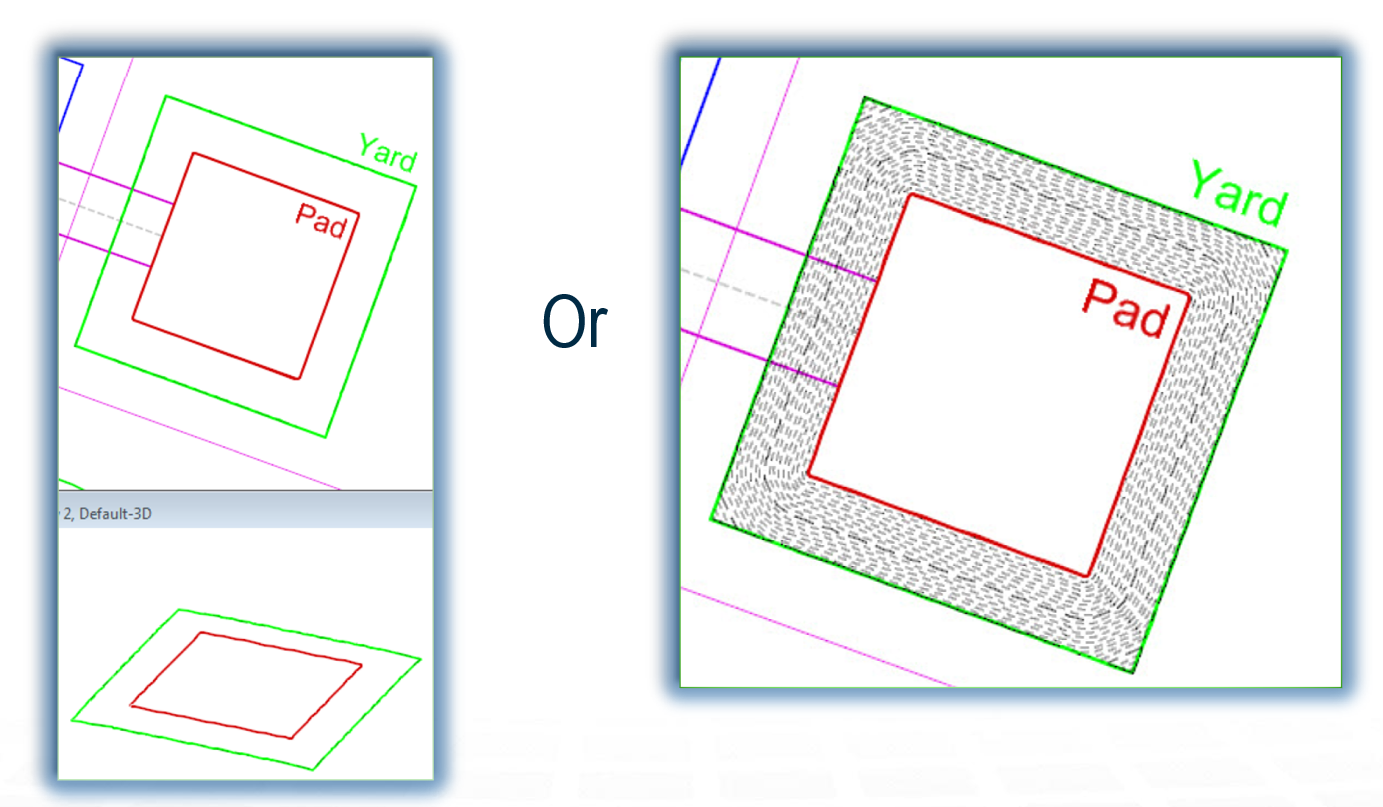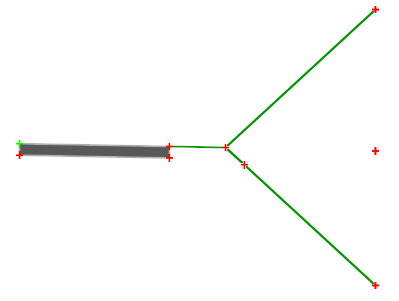Grading
Road and Site Vertical Geometry is the Same
The Vertical Design tools found in the Vertical group of the Geometry tab encompass both "traditional" roadway geometry tools and the "detail grading" tools under the same philosophy and architecture. They are not separate technologies, they do not have separate philosophies. The tools play by the same rules and provide the same CONNECTed Results, including honoring your Design Intent.
Site Layout tools
The new Site Layout Tools do, actually, differ in their underlying architecture. The Site Layout Tools automate horizontal layout and optimize grading very quickly. Once a Site Concept is "finalized," the tools build a model using the "traditional" Bentley Civil horizontal 3D geometry. You get a model very close to a final design, except for detailed grading such as for drainage. If you need to grade to inlets or otherwise warp the design, the "traditional" Civil Geometry tools can be used to provde precise design.
Master Just Two Tools
All the "traditional" "corridor" tools can be used for non-corridor uses. Many "site" workflows can be achieved with just two tools: Profile from Surface and Profile by Slope From Element. "Profiles" is OpenRoads terminology for Vertical Design Elements.
Profile From Surface is a way to build vertical geometry (a Profile) relative to a Terrain. Generally with site work, you start with a fixed elevation or some elevation relative to the surface.

Profile by Slope From Element does this: it Creates a Vertical Element in one horizontal element from another horizontal element's Vertical Element - at a slope. For example you can create an edge of pavement that is 2% down from the centerline's active profile. This is the most common vertical relationship between and edge of pavement and a centerline profile grade line. A site example might be that the concrete apron around a building footpring slope away from the building at 1%.

That's the essence of Grading: creating vertical geometry (profiles) from either terrain or from other profiles.
Of course, the "essence" isn't all. There are variations on these tools and tools with different purposes to solve more vertical geometry needs.
Not only that, but while 3D linework can define how you want to grade: there are three additional elements required for a complete 3D grading model:
- Terrains - intermediate and final
- Components
- Ground surface Tie-ins
Why Terrains?
Terrains are the 3D surfaces created from 3D Elements. Why do we need Terrains?
- Contours
- Quality Control / Debugging
- Draping Other Elements
- Components - 3D spatial elements
- Material Layers and Quantities
- Volumes
- Contours bring Joy to Engineers - or at least a sense of security
Contours are unmatched in conveying detailed information about surfaces - subtle changes in gradient can easily be spotted with contours.
For example, which looks easier to debug: without or with contours:

Components and Ground Surface Tie-ins
Components are the 3D model entities that get built, quantified, and paid for. 3D Linework define limits for Tooltip text, which provide spatial components, and the pathways forTooltip text.
Ground Surface Tie-ins can be as simple as a single cut or fill slope from along a proposed 3D linear element to the ground. It can be wildly complex. OpenRoads templates are not just for corridors. They essentially "extrude" lines and shapes along any 3D element. Additionally, End Condition technology allows complex If-Then logic to model virtually any defined slope treatment standard.
Linear Components, such as curbs, and end treatments can be modeled in separate steps - individual Linear Templates - or at once using a combined Linear Template.

Curb islands for vegetation within a parking lot would typically be modeled with a Curb-only Linear Template. Perimeter curbs would typically be run with a Curb-and-sideslope Linear Template.
Summary
The essense of site grading consists of
- Mastering a couple of Profile Tools
- Creating proposed Terrains
- Finishing the Detailing with Surface Templates and Linear Templates
Additional tools provide solutions for different engineering needs, but they are variations on a consistent theme.
It's recommended to take Bentley's Geometry classes first. They are geared towards Roadway Design, but Site Grading follows all the same principles as Roadway Profiling.
